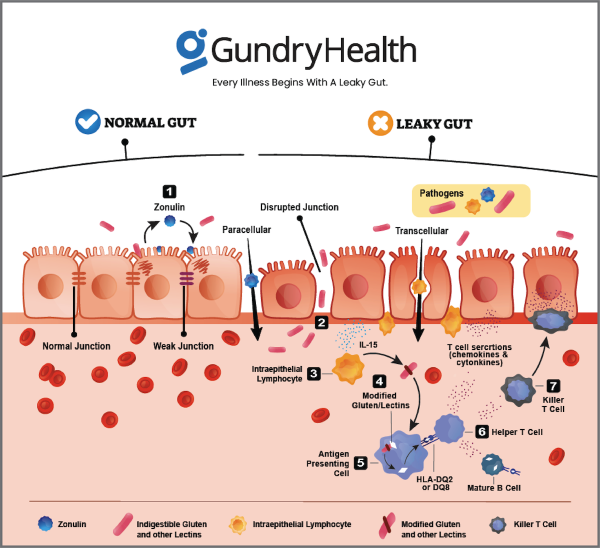Comprehensive Guide to Takayasu’s Arteritis: From Traditional Treatments to Innovative Approaches by Gundry Health
Takayasu’s arteritis is a rare but serious inflammatory disease that primarily affects large blood vessels, including the aorta and its main branches. This article aims to provide an in-depth understanding of this condition, covering its causes, symptoms, prognosis, traditional treatment options, and the benefits of innovative approaches offered by Gundry Health.
Understanding Takayasu’s Arteritis
Takayasu’s arteritis causes inflammation in the walls of the largest arteries in the body, resulting in narrowing, weakening, and scarring. Symptoms often include fatigue, weight loss, fever, muscle and joint pain, and in advanced stages, can lead to serious complications such as heart failure, stroke, and high blood pressure.
The exact cause remains unknown, but it’s believed to be autoimmune in nature, where the body’s immune system mistakenly attacks the blood vessels.
Symptoms
The signs and symptoms of TA often occur in two stages. In the first stage, you may feel unwell with fatigue, unintended weight loss, muscle and joint aches and pains, and mild fever, sometimes accompanied by night sweats. Not everyone has these early signs and symptoms, and it’s possible for inflammation to damage arteries for years before you realize something is wrong.
In the second stage, you may experience narrowing of blood vessels and reduced blood supply, which can cause fatigue, pain, or aching in your arms and legs, belly pain from decreased blood flow to your intestines, high blood pressure from decreased blood flow to your kidneys, stroke, or heart attack. The rarity of the disease worldwide makes it very difficult to identify an underlying cause 3.
Traditional Treatment Options
Treatment of TA focuses on controlling inflammation with medications and preventing further damage to your blood vessels. The first line of treatment is usually a corticosteroid, such as prednisone. Even if you respond well to corticosteroids, you may need to take them for a long time, and you may need additional medications to control your blood pressure or prevent blood clots. Other medications that may be used include immunosuppressants, such as methotrexate and azathioprine, and biologic agents, such as tocilizumab and ustekinumab 5. In severe cases, surgical procedures may be required to bypass or open blocked arteries. However, these treatments may have side effects and don’t always fully address the individual patient’s needs.
Real-Life Patient Experiences
Living with TA can be challenging, and patients may need long-term treatment. Some patients have no symptoms or only mild symptoms, but others are disabled or need surgery more than once. Because TA can cause heart problems, high blood pressure, and stroke, patients with TA should talk to their doctor about ways to lower the risk of these serious problems. Blood pressure measurement is often not correct (falsely low due to blocked arteries) in the arm, so your healthcare provider may need to measure your blood pressure in leg 6.
It is important to note that symptoms may come and go even with effective treatment. Patients should pay attention to symptoms similar to those that occurred originally or to any new ones and be sure to tell their doctor promptly about any changes1.
Real-life patient experiences with TA can be found in various sources, such as patient stories and interviews. For example, Damon, a patient with TA, advocates for patients and their families to understand their health conditions, especially during the time of COVID-197. Dedra and Devri, two patients with TA, share their stories to illustrate how TA impacts lives in similar and different ways 8. Nathalie, another patient with TA, shares her experience of finally getting a clear picture of what was going on with her body after meeting with a doctor who helped her understand the situation.
Personalized Care at Gundry Health
Gundry Health, an online clinical care platform led by Dr. Steven Gundry offers a unique approach to managing conditions like Takayasu’s arteritis. Gundry Health combines conventional medical treatments with cutting-edge nutritional and lifestyle therapies, focusing on individualized care plans based on each patient’s unique health profile.
Nutritional Interventions
Gundry Health believes in the power of diet in managing inflammation and promoting overall health and offers personalized dietary recommendations aimed at reducing inflammation and promoting cardiovascular health.
Lifestyle Therapies
Stress management techniques, exercise regimens, and other lifestyle modifications are also part of the therapeutic interventions offered by Gundry Health. These can play a significant role in managing symptoms and improving quality of life for patients with Takayasu’s arteritis.
Digital Healthcare Platform
Gundry Health’s digital platform provides easy access, flexibility, and personalized care for individuals suffering from rare diseases like Takayasu’s arteritis. Patients can receive expert care right from their homes, making disease management more convenient and less stressful.
Conclusion
Takayasu’s arteritis is a complex condition requiring a comprehensive understanding and an individualized approach for effective management. While traditional treatments form the backbone of managing this disease, Gundry Health’s blend of conventional medical treatment with nutritional and lifestyle interventions offers a promising alternative for patients seeking a more personalized treatment option.
In conclusion, TA is a rare type of vasculitis that can cause significant damage to the body’s blood vessels. While the cause of TA remains unknown, treatment options are available to control inflammation and prevent further damage. Patients with TA should work closely with their healthcare providers to manage their symptoms and reduce the risk of serious complications.
Remember, early diagnosis and appropriate treatment can significantly improve the prognosis for individuals with Takayasu’s arteritis. Therefore, anyone experiencing symptoms should seek medical attention promptly and explore all available treatment options, including the innovative approach offered by Gundry Health.
Get personalized care and recommendations for Takayasu’s Arteritis from Dr Gundry-Approved program
If you’re looking for more guidance about Takayasu’s Arteritis than this short list of recommendations, Dr. Gundry’s unique health program is now available to you (without needing an appointment at one of Dr. Gundry’s two, waitlist-only West Coast clinics).
Thanks to the pioneering work of Dr. Gundry and his team at Gundry Health, patient care team trained in Dr. Gundry’s unique holistic methods are now available to help you craft your own personalized Takayasu’s Arteritis program.
It’s easy to get started.
Simply click the link below to get more information about personalized Takayasu’s Arteritis treatment plan options, so you can get expert analysis, diagnostic care, and a plan for tackling Takayasu’s Arteritis, arthritis, or other autoimmune diseases.
Each patient care team member at Gundry Health is Board Certified and trained in Dr. Gundry’s renowned approach to functional medicine and care.
Get your personal lab data and talk to a U.S. licensed doctor. Click Here.







